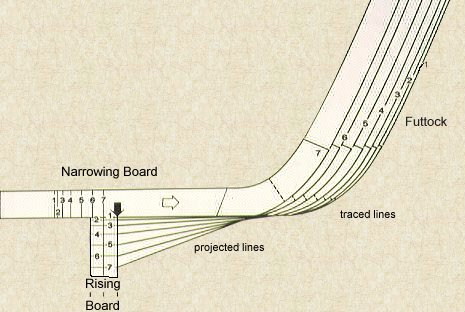 |
Shipwrights built Exploration
and Discovery era ships without lines drawings, half models, or architectural
plans. They determined frame size and shape using a technique called
Mediterranean whole moulding. |
The
technique uses three patterns called graminhos. One pattern represents
the narrowing board (the floor), another the futtock, and the third the rising
board. The patterns are made of thin wood on a 1:1 scale. Each has a series
of parallel lines used as guides to fit the three patterns together in various
configurations. The resulting shapes are traced directly on the timber to be
cut.
Once
shipwrights developed the means to build models and draw plans from which to
construct the desired ship, whole moulding disappeared. Or so we thought. While
working in Brazil in 1980, the late
John Sarsfield
discovered
the Mediterranean whole-moulding technique still in daily use in the shipyards
of Valença on the coast of Bahía. John's curiosity soon became
an obsession and finally culminated in an amazing
experiment.

